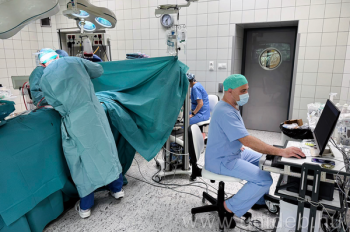Around twenty percent of children and adolescents worldwide are overweight or obese. It is estimated that within ten years up to 60% of the adult population could be affected by the consequences of childhood obesity. Early onset obesity is a steady progression to obesity and becomes increasingly difficult to reverse over the years. Obesity increases the development of metabolic diseases, impairs the circulatory system and can cause chronic inflammation. Researchers at the University of Debrecen have been actively studying the development of fat cells for two years.
- We are trying to understand what signals determine the metabolism of fat cells after birth and in early childhood. Under the right stimuli, fat cells do not store fats but break them down to release chemical energy or heat energy. Recent research shows that fat cells at birth can have a significant heat-producing capacity. But if this capacity is lost, the risk of childhood obesity increases. The adipose tissue of young children in the early stages of obesity lacks the expression of genes required for thermogenesis and a network of genes that amplify the ability to store fat becomes active. Since these abnormalities are associated with increased or decreased expression of specific genes, it is expected that in the future the presence or absence of the proteins encoded by these genes will be used to estimate the risk of obesity. The latter is of importance in prevention and early detection," said Tamás Röszer, lead investigator of the study and a paediatric obesitologist at the University of Debrecen, Instit
ute of Paediatrics, University of Debrecen.
Several genes have been identified that are associated with early loss of thermogenesis and a new mechanism has been identified that helps fat cells to break down fat.
- Mitochondria, the energy-producing cells, evolved from simple bacteria-like organisms. Even now, their genetic material is similar to that of pathogens, so when they are damaged in obesity, the escaping DNA is recognised by the immune system as foreign, triggering an inflammatory process that impairs metabolic efficiency. Our research has identified a defence mechanism that prevents this inflammation. We hope that in the future we will be able to reactivate this defence mechanism. We are currently conducting research into this," added the University of Debrecen researcher.
In addition to the Institute of Paediatrics at the University of Debrecen, the studies involved experts from the Institute of Pathology and the University of Ulm in Germany.
The researchers also looked at how breast milk can reduce obesity in young children. The researchers detected a molecule in breast milk that promotes fat burning in developing adipose tissue.
- Our research shows that breastfeeding for the first three months is enough to maintain a healthy body fat percentage in later life. Breast milk is necessary for a healthy metabolism and it has a protective effect. There are signals in breast milk that can affect metabolism. On the one hand, they induce hormonal changes and, on the other hand, they promote the use of fats in developing adipose tissue. Fats are not accumulated but converted into energy. In breast milk, we have successfully identified a specific fat molecule that transmits signals from mother to child, which in turn leads to the development of thermogenic, fat-burning properties in fat cells," said Tamás Röszer.
The researchers are continuing a series of molecular-level studies to try to understand how healthy fat tissue develops. They hope to arrive at therapeutic targets that may actually work effectively in drug therapy.
The research has been published in several international scientific journals.
Press Office – CzA


